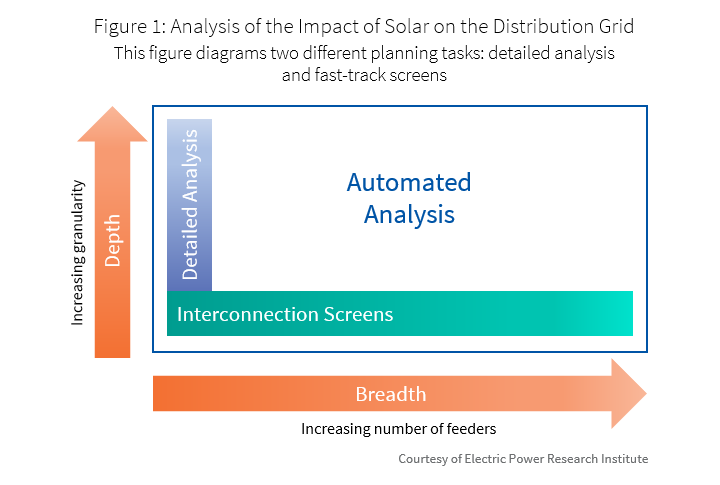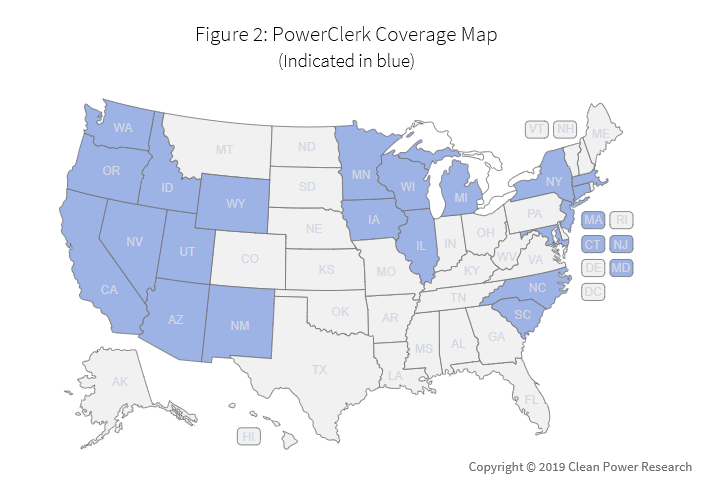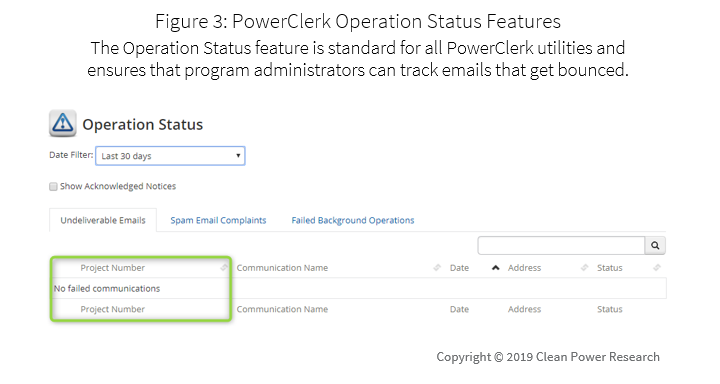The past two years have seen key milestones for distributed energy resource (DER) adoption in the U.S., including:
- Passing one million total residential solar installations in 2017.
- All solar generation (including residential, commercial and utility scale) in 2018 supplying the energy equivalent to the needs of ten million homes.
- Storage getting attention, with many states moving forward with aggressive energy storage targets.
During this time, PowerClerk®, the cloud-based energy program automation and management platform from Clean Power Research®, achieved several milestones of its own:
- More than one million DER applications cumulatively across all versions of PowerClerk, accounting for roughly 40% of all rooftop solar projects in the U.S.
- 500,000 submitted projects in the latest PowerClerk version.
- Battery systems added to one-third of all PowerClerk programs.
Additionally, project submissions have accelerated since our last report—more than doubling in the last two years compared to prior years.
What does this mean for our PowerClerk utility customers? As a result of this growth, PowerClerk has become an industry-best practice powerhouse, capturing vital data and giving utilities unprecedented insight into interconnected distributed resources. Access to this DER intelligence enhances cross-program management, customer/applicant experiences, planning and analysis, reporting, and regulatory compliance. Here are a few highlights.
DER tracking: not just for applicants!
PowerClerk has made transparency and tracking for the applicant straightforward. Applicants can view the status of their projects, while utility administrators can reliably scale communications with customers.
Utilities are also applying these core tracking features to internal business uses, such as distribution planning. Increasingly, many PowerClerk-using groups at utilities—teams that manage things like interconnection, for example—are becoming the key source of business intelligence data for grid modernization efforts.
Critical data fields required for interconnection are built into PowerClerk. These requirements have developed over years of feedback, not only from distributed generation interconnection, but also distribution planning and engineering. This has led to the addition of interconnection screens and detailed analysis workflows that are being tracked by utilities in PowerClerk with tools such as EPRI DRIVE. A survey of different screening tasks is shown in Figure 1.

PowerClerk customers benefit from our 10-plus years of experience developing and enhancing PowerClerk. This includes best practices that have been incorporated by us on behalf of our utility and agency customers. Those customers have overwhelmingly stayed committed to PowerClerk year after year, renewing their subscriptions.
This long-term understanding has, in turn, driven features in PowerClerk that allow utilities themselves to securely and appropriately expose DER specifications to downstream processes. Collecting this information up front at the time of interconnection is the most cost-effective approach. With PowerClerk, utilities avoid the need to backfill data when future requirements from other groups within the utility arise.
Risk Management: knowing what to track is key
PowerClerk has also grown its capabilities to capture data for regulatory compliance. Figure 2 shows the breadth of regulatory environments that the PowerClerk user base operates in. As a result, PowerClerk offers program administrators a variety of flexible tracking tools to meet local regulations.

For example, a number of states have explicit or implicit customer engagement requirements for utilities. In these situations, utilities must meet minimum levels of responsiveness to DER interconnection applicants.
Recently, a utility demonstrated the reliability of their communications using PowerClerk’s Operation Status feature (see Figure 3). This proved to the utility commission that they had successfully sent communications to interconnection applicants.

This capability mattered to the utility because it reduced the risks associated with real or perceived lack of compliance to state regulations.
Looking beyond one million DER applications
Utilities and agencies are using PowerClerk in a variety of environments, ranging from areas with high DER penetration to regions where DER adoption is just starting but growing rapidly. Hitting a milestone of over one million projects speaks to the years of expertise that are built into the PowerClerk platform.
DER growth is being fueled by increasing adoption of an ever-widening range of DER options. Battery storage, electric vehicles, heat pumps and heat-pump water heaters are all experiencing key points of inflection in market growth. PowerClerk is ready to streamline integration of DERs with the electric utility—and provide assurance of data quality and regulatory compliance that helps maintain the long-term viability of the utility business.
Contact us for a roadmap update and keep your eye out for battery list form elements as well as other DER-focused solutions that will further empower utilities to take control of their energy future.
